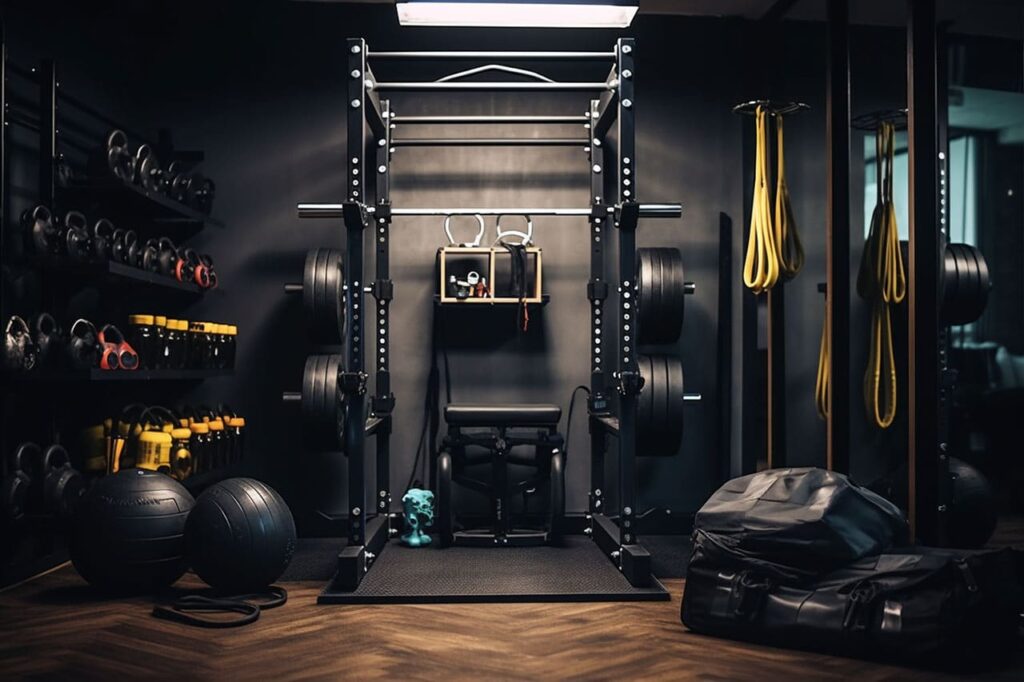


So, you’re a half-marathoner, huh? That’s a major accomplishment! You’ve definitely got passion, tenacity, and a whole lot of grit. But, I’m here to tell you that running 13.1 miles isn’t just about lacing up those sneakers and hitting the pavement. The real secret to keeping your body strong and your runs effective lies in something often overlooked – cross-training.
Cross-training for half marathons? Absolutely! Cross-training, if you’re not familiar, is the practice of engaging in different types of exercise to improve overall performance. It’s not just for the elite athletes, it’s for us too – the weekend warriors, the early morning pavement pounders, the dedicated half-marathoners. I promise you, integrating effective cross-training into your routine can be a game-changer. So, let’s dive into the world of cross-training and see how we can make you an even stronger half-marathoner.
Table of Contents
Benefits of Cross-Training
First off, let’s dive into how cross-training can boost your strength and endurance. You’ll find that mixing up your workouts can push you past your usual limits, giving you that extra edge. Next up, we’ll talk about how it can vastly improve your balance and flexibility, making you feel like a whole new person. Finally, you can’t ignore the reduced risk of injury that comes with a well-rounded routine. Trust me, your body will thank you for it.
Increased Strength and Endurance
Having whetted your appetite with the basics of cross-training, let’s now flex our muscles and delve into the meaty benefits. Let’s start with a brawny one – Increased Strength and Endurance.
When you’re stuck in the same fitness routine, your muscles get used to the same old movements. But when you cross-train, you’re constantly challenging your body in new ways. This keeps your muscles guessing, and as a result, you’ll see a noticeable increase in both strength and endurance. Imagine being able to go for a long run without getting winded, or lifting heavier weights without straining. That’s the power of cross-training. It’s not just about looking good, it’s about feeling good and being able to push past your limits.
But it doesn’t stop there. By incorporating a variety of exercises, you’re not just working on the obvious muscles. You’re also targeting those neglected muscles that don’t usually get a look in. This comprehensive approach translates to a better overall body strength and increased endurance. So, don’t you think it’s high time you stepped out of your comfort zone and tried cross-training?
Improved Balance and Flexibility
Next, let’s dive into the world of balance and flexibility. So, why are they so important, you ask? They are key components that can make or break your physical wellness. If you’ve ever tried standing on one foot or reaching for something just out of your grasp, you know exactly what I’m talking about.
Cross-training is a game-changer for enhancing balance and flexibility. You see, when we repeat the same movements over and over, our bodies can become too accustomed to these patterns. This might sound good, but it’s really a limitation. By introducing new types of exercise, we can challenge our bodies in different ways. This helps us become more flexible and balanced.
Just think about it. If all you ever do is run, you’re mainly working your legs and cardiovascular system. But what about your upper body strength and flexibility? Cross-training is your chance to stretch and strengthen those overlooked muscles. It’s a broad spectrum workout that keeps your body guessing and adapting. And trust me, your body will thank you for it. So, are you ready to give cross-training a shot?
Reduced Risk of Injury
Swinging the pendulum from strength and endurance, let’s venture into a realm that’s often overlooked, yet vitally important – the Reduced Risk of Injury achieved through cross-training.
Nothing can throw a wrench in your fitness journey quite like an injury. It’s not just the physical pain, it’s the mental frustration that truly stings. But here’s the good news, cross-training is your knight in shining armor, ready to combat those injury risks. By incorporating different types of exercises, you’re not just working out one muscle group excessively, you’re distributing the load across various muscles. This diversification of strain helps prevent overuse injuries, common in those sticking to a single type of exercise.
Now here’s where you need to be bold and step out of your comfort zone. As much as you might love your routine, try to sprinkle in some other forms of exercise. You might be surprised how much you enjoy it. More importantly, your body will thank you for it. So, remember, cross-training isn’t just about keeping things fresh and exciting, it’s about safeguarding your body from injuries and ensuring you can keep doing what you love.
Types of Cross-Training

First off, let’s dive into Strength Training, a key component that’s often overlooked in many workout routines. Next, we can’t talk about cross-training without touching on Yoga, which is a great way to improve flexibility and core strength. Lastly, the excitement can’t be contained when it comes to Plyometrics, these high-intensity exercises are a total game-changer for boosting stamina.
Strength Training
Now that we’ve flexed our muscles on the amazing benefits of cross-training, let’s dive deeper into the various types of cross-training you can incorporate into your fitness regimen. Get ready, because we’re about to embark on an exciting journey that will change your fitness game forever!
First up, we have Strength Training. Now, I know what you’re thinking, “Isn’t that just for bodybuilders and powerlifters?” Absolutely not! Strength training is for everyone and anyone who wants to enhance their muscular strength, power, and endurance. This type of training works your muscles by making them contract against a force, typically weights. Don’t be intimidated by the weight room – it’s your friend, not your enemy! Incorporating strength training into your routine can help you build lean muscle mass, improve bone density, and even boost your metabolism. Remember, it’s not just about lifting heavy, it’s about lifting right. Proper form and technique are crucial to reaping the full benefits of strength training. So, go on, grab those weights and show them who’s boss!
Yoga
Having highlighted the myriad benefits of cross-training, it’s important to explore the specific types of exercises that can contribute to your overall fitness. Incorporating a variety of training methods into your workout routine not only keeps things interesting but also maximizes your physical capabilities.
Now, let’s dive into one of my favorite types of cross-training: Yoga. Here’s the thing about yoga: it’s not just about stretching. It’s a whole body workout that improves strength, flexibility, and balance all at once. It’s more than just a series of poses, it’s a lifestyle that promotes mindfulness, reduces stress, and enhances mental clarity.
You might think that yoga doesn’t contribute much to your overall strength, but let me tell you, it’s a game changer. Poses such as plank, chair pose, and warrior sequences build core strength and stability, which is essential for overall fitness. Practicing yoga regularly will also increase your flexibility, which can help prevent injuries in other types of workouts. It’s a humbling but empowering exercise that will push your limits, challenge you mentally, and reward you physically. So don’t underestimate yoga; it’s a deceptively demanding discipline that can significantly boost your cross-training routine.
Plyometrics
Now that we’ve got you pumped up about the benefits of cross-training, let’s leap into different types of cross-training. And when I say leap, I’m not just throwing in a random action verb. I’m introducing you to the thrill of Plyometrics.
Plyometrics, or jump training, is all about explosive, high-intensity exercises that push your muscles to their max in short intervals. Imagine hopping, skipping, or jumping onto boxes. Yeah, it’s as intense as it sounds but believe me, it’s an absolute game-changer for your fitness routine. It’s not just about building strength, but about improving your speed, agility, and overall athletic performance. Imagine being able to sprint faster, jump higher, and move with more agility than ever before. That’s the power of plyometrics. But remember, as with any exercise, start slow and focus on form to avoid injury. Don’t be shy, give it a try, and watch as you seriously level up your athletic prowess.
Finding The Right Cross-Training Routine

First, let’s have an honest look at where you’re starting from by assessing your current fitness level. It’s important to know your baseline so we can measure your progress. Next, we need to consider your goals; what are you hoping to achieve with cross-training? Finally, let’s make sure we’re not setting ourselves up for disappointment by setting realistic expectations. This is about progress, not perfection.
Assess Your Current Fitness Level
Like a ship setting sail on its maiden voyage, your cross-training adventure begins with a comprehensive understanding of your current position. It’s crucial to first assess your current fitness level.
Think of it like mapping out a journey. You wouldn’t set off without knowing your starting point, right? So, let’s get real about where you stand with your fitness. Don’t worry, this isn’t about judgement. It’s about understanding your strengths and weaknesses. Let’s look into how long you can run, how many push-ups you can do, or how long you hold a plank. Can you touch your toes? How about your cardiovascular endurance? These are some of the questions that will help us pinpoint your current fitness level. Remember, it’s not a competition with anyone else. It’s about knowing where you stand so that we can plan the most effective cross-training routine for you.
Consider Your Goals
Having traversed the landscape of different cross-training types, let’s take a leap into identifying the perfect routine for you. It’s not just about being able to do a bit of everything; it’s about finding what truly works for your body and your goals. And speaking of goals, let’s dive into that.
What are you looking to achieve with cross-training? Are you training for a specific event or sport? Are you trying to lose weight or build muscle? Maybe, you’re just looking to add variety to your current routine. Whatever your goal may be, it’s crucial to identify it clearly. The more precise you are with your goals, the more effectively you can tailor your cross-training routine to meet them. Be bold and be specific. It’s your fitness journey, own it!
So, if you’re training for a marathon, your routine will likely include more cardio-based exercises like cycling or swimming. On the other hand, if you’re looking to build muscle mass, weightlifting might become a more significant part of your routine. Remember, there is no one-size-fits-all in cross-training. It’s all about what suits you and your goals.
Set Realistic Expectations
Now that we’ve delved into the many types of cross-training, let’s talk about how you can find the perfect routine for your unique needs. It’s essential to be honest with yourself and set realistic expectations.
Listen, I know you’re pumped up and ready to crush your fitness goals, but let’s take a moment to keep it real. Rome wasn’t built in a day, and neither is a solid, sustainable fitness routine. Fitness is a journey, not a sprint. Set goals that challenge you, but don’t set yourself up for failure with unrealistic expectations. Remember, it’s not about being the best from day one. It’s about consistent progress. You might not be able to run a marathon right off the bat, and that’s okay. Aim for a 5K first, then work your way up to a 10K, a half-marathon, and then the full marathon.
Setting realistic expectations for your cross-training routine will not only keep you motivated but also help prevent injuries. Hurrying to meet an unrealistic target often leads to overtraining, which can result in injuries. So, let’s focus on progress, not perfection. Remember, your fitness journey is unique to you, and comparing yourself to others will only set you up for disappointment. So, let’s lace up those training shoes and get started on our journey, one step at a time.
Suggested Schedule – Cross-Training for Half Marathons
Here is a suggested schedule of cross-training for half marathon runners. This is not a set schedule and you can modify it as needed.
| Day of the Week | Cross-Training Exercise | Brief Description |
|---|---|---|
| Monday | Strength Training | Work on major muscle groups. Exercises can include squats, lunges, deadlifts, and core work. |
| Tuesday | Rest Day | Allow your body to recover and adapt to the training. Light stretching or yoga is beneficial. |
| Wednesday | Cycling | Cycling for 30-60 minutes will help improve cardiovascular fitness without stressing the joints. |
| Thursday | Yoga | Yoga will help with flexibility and core strength, and it’s a great way to relax and focus. |
| Friday | Swimming | Swimming provides a full-body workout, increases lung capacity, and aids in recovery. |
| Saturday | Rest Day | Again, allow your body to recover. Light stretching or walking can be done. |
| Sunday | Pilates | Pilates strengthens the core, improves balance, and increases flexibility. |
Remember, these exercises are meant to supplement your running training, not replace it. It’s important to maintain a balance between your running and cross-training to avoid overtraining and injury.
Frequency and Duration of Cross-Training

Firstly, it’s crucial to set a consistent schedule. This not only helps to keep you accountable, but it also allows your body to adjust and prepare for each session. Now, when you’re just starting out, it’s important to start slowly and increase intensity gradually as this can prevent injury and make your cross-training more effective. Lastly, don’t forget to take rest days in between your intense cross-training days as these are needed for your muscles to recover and grow stronger.
Set a Consistent Schedule
Now that we’ve ironed out the basics of the right cross-training routine, it’s time to power through and plan when and how often you’re going to sweat it out. Here’s where the rubber meets the road: setting a consistent schedule.
The first thing you’ve got to do, champ, is commit. Develop a routine that fits into your daily life and stick to it like glue. Don’t let excuses creep in. Remember, consistency is key. A workout schedule doesn’t have to be a daunting regiment. Start by penciling in workouts three times a week. Keep those days sacred, and make sure to honor your commitment to yourself. This is about building a routine that works for you, and not against you. Your body will thank you for it.
Believe me, setting a consistent schedule is going to be a game-changer in your fitness journey. It’s one thing to have an impressive workout plan, but without a regular schedule, it’s nothing but a piece of paper. So, go ahead, set that schedule and let’s crush these fitness goals together!
Start Slowly and Increase Intensity Gradually
Having nailed down the perfect routine, it’s time to delve into how often and how long you should be engaging in cross-training. Now, onto our next topic, Start Slowly and Increase Intensity Gradually.
Before you decide to go all in, it’s crucial to understand that cross-training is not about pushing your body to its limits from the get-go. It’s all about gradual progression. Start off with light exercises and slowly increase the intensity and duration over time. This way, your muscles have enough time to adapt and grow stronger. Remember, the goal here is to enhance your overall fitness and not to overwork your body.
It’s tempting to jump straight into high intensity workouts, but trust me, you’ll thank yourself in the long run for taking it slow. It’s not a race, it’s a journey. And just like any journey, progressing at your own pace is key. Be patient with yourself. You’re laying the groundwork for a more fit and healthier you.
Take Rest Days
Now that we’ve tackled the art of finding the right cross-training routine, let’s dive into something equally important – the frequency and duration of your workouts.
Let’s get one thing straight, taking rest days is not a sign of weakness. On the contrary, it’s a sign of strength and intelligence. Folks, your body needs time to recover and rebuild after a hard workout. And here’s the kicker – if you don’t rest, you’re not giving your body the time it needs to get stronger. If you’re constantly pounding away without giving your body a break, you’re actually weakening it.
So, take a day off. Even better, take two days off. You’re not slacking, you’re investing in your body’s ability to perform better in the long run. And remember, it’s all about balance. You’re not being lazy, you’re being smart. And that, my friends, is the true mark of a champion.
Setting Up Your Cross-Training Environment

Firstly, let’s talk about Equipment and Gear. You’ll need the right tools to get the job done, and I’m here to help you figure out exactly what that means for your cross-training routine. Next, we’re going to focus on Space and Location; it’s important to have a dedicated space that allows you to train effectively without any distractions. Lastly, we can’t overlook Proper Form and Technique – this is a key aspect to ensure you’re training safely and efficiently.
Equipment and Gear
Just as you’ve taken the time to understand the frequency and duration that suits your cross-training regime, it’s equally important to set up a conducive cross-training environment. We’ll now discuss the various aspects of this, starting with a crucial component – Equipment and Gear.
Proper equipment and gear make a world of difference when you’re cross-training. They’re not just about looking good, they’re about feeling good and staying safe during your workout. You wouldn’t want to use a bike that’s constantly wobbling or dumbbells that are chipped, would you? Investing in quality gear is worth it. If you’re into running, get a good pair of running shoes to protect your feet. If you’re lifting weights, a sturdy pair of gloves can prevent blisters and provide better grip. If yoga is your thing, a thick, non-slip mat will enhance your practice. Remember, the right gear can boost your performance and keep injuries at bay, so don’t skimp on this!
Space and Location
After you’ve nailed down the frequency and duration of your cross-training, it’s time to dive into setting up your own cross-training environment. A key part of this is determining your space and location.
Now, don’t go thinking you need a massive space or a fancy gym to get effective workouts. That’s just not true. What’s truly important is having a comfortable and safe environment where you can perform your exercises without restrictions. This could be your living room, basement, a local park, or even your backyard. What matters here is space utilization. You need to have enough room to perform your exercises without bumping into furniture or tripping over things.
Remember, the location should also inspire and motivate you to work out. If you’re a nature lover, a local park could be the perfect place for your cross-training. If you prefer privacy, then your basement or living room would be ideal. The key is to find a location that makes you say, “I can’t wait to train here!” It’s all about giving yourself the best shot at success!
Proper Form and Technique
Now that we’ve fine-tuned the frequency and duration of your cross-training, let’s delve into shaping up your cross-training environment. This isn’t just about the physical space or the gear you’ll need, but it’s also about mastering the proper form and technique.
Proper form and technique are the backbone of any successful cross-training regimen. Remember, it’s not just about how much you can lift or how fast you can run, but it’s all about how well you do it. Incorrect form can not only hamper your progress but also increase your risk of injury. So, always strive for quality over quantity.
Pay attention to your body’s signals and work on maintaining the correct posture throughout each exercise. Maintain a straight back when lifting weights, ensure your knees are aligned with your ankles when doing squats, and keep your core engaged during planks. You can even record yourself during workouts to spot any errors in your form. Remember, it’s your journey, so don’t rush it. Take your time to learn and perfect each move. It’s the consistency in correct execution that’ll lead you to success.
Staying Motivated

Firstly, let’s tackle the importance of setting SMART goals. This technique is a game-changer because it’ll help you define clear, achievable steps towards your objectives. Next, remember that tracking your progress not only reinforces your actions but also gives a sense of accomplishment. Lastly, don’t underestimate the power of camaraderie – join a group or find a partner to share your journey, it’ll keep the motivation flowing!
Set SMART Goals
Now that we’ve got our cross-training environment all set up, it’s time to dive into the real game-changer, hitting the motivational gas pedal! Let’s start by talking about setting SMART Goals.
You’re probably wondering, what on earth are SMART Goals? Well, they’re not your run-of-the-mill goals. These are goals that are Specific, Measurable, Achievable, Relevant, and Time-bound. To stay motivated in your training, you’ve got to know exactly what you want to achieve, how you’re going to measure it, ensure it’s something you can realistically accomplish, make sure it’s relevant to your overall fitness journey, and set a deadline for achieving it.
Trust me, I’ve seen this technique work wonders for my own training and for countless others. Instead of vaguely saying “I want to get fit”, you’ll be saying, “I want to be able to run 5k in 30 minutes within the next two months”, and that precision is powerful. It’s a promise you’re making to yourself, and it’s a challenge that’ll keep you driven day in, day out.
Track Your Progress
Now that you’ve got your grueling cross-training environment all set up, it’s time to talk about what keeps you coming back to it every day. What’s that, you ask? It’s your fire, your passion, your motivation! One powerful way to stay motivated through the sweat and struggle is to Track Your Progress.
Let’s face it, we’re all a bit of a show-off inside, aren’t we? There’s nothing quite like the rush of seeing how far you’ve come, of smashing through your old records like they’re made of glass. Every rep, every mile, every drop of sweat is another step towards your goals. So, make a habit of tracking your progress, and I guarantee, you’ll find yourself pushing harder than ever before.
Keep a workout journal, use a fitness app, or even just scrawl your triumphs on the wall like some kind of fitness caveman. It doesn’t matter how you do it, just do it. Remember, what gets measured gets managed. And what gets managed, gets mastered.
Join a Group or Find a Partner
Having set up your cross-training environment, it’s now time to step up the game and ensure you stick with your training. Let’s face it, the fitness journey can be tough, and sometimes, you might need an extra push. This is where the importance of joining a group or finding a partner comes in.
Here’s the thing: fitness is a journey that can be quite challenging when you’re going it alone. That’s why joining a fitness group or finding a workout partner can make a huge difference. When you join a group or find a partner, you get to share your progress, goals, and challenges. You motivate each other, and on those days when you feel like giving up, you have someone to push you.
It’s all about accountability, and the truth is, it’s easier to slack off when no one’s watching. So go ahead and find that fitness group or workout partner that will keep you on your toes. Remember, your fitness journey doesn’t have to be a solitary one. After all, we’re stronger together.
Making Cross-Training Fun

Firstly, it’s essential to remind ourselves to choose activities we enjoy. It’s no secret that we’re more likely to stick to exercises that bring us joy, so let’s make a point to select routines that genuinely excite us. Next, don’t be afraid to experiment with different exercises – there’s a world of workouts out there waiting for us to explore, and each one brings something unique to our fitness journey. Lastly, the key to keeping things fresh and exciting is to incorporate variety into our workouts, mixing things up not only helps us avoid workout burnout, but also ensures our body gets a well-rounded workout.
Choose Activities You Enjoy
While we’re on the subject of motivation, let’s shift gears a little and talk about cross-training. It’s crucial, yet it often seems like a chore. But did you know that it can actually be fun? Yes, I said fun! Here’s how.
Choose Activities You Enjoy
First and foremost, your workouts shouldn’t feel like a punishment. Trust me, you’re more likely to stick with your routine if you’re doing something you like. You don’t have to slog it out on the treadmill if you hate running. Maybe you prefer dancing, swimming, or cycling? Go for it! The most important thing is that you enjoy what you’re doing. You don’t have to be the next Olympic champion, but you should at least feel a sense of accomplishment and, dare I say it, joy after each workout. Do what makes you happy, and you’ll see that cross-training can be more than just routine – it can be a source of fun and fulfillment.
Experiment With Different Exercises
Now that we’ve powered through staying motivated, let’s turn up the fun-factor with cross-training! Dare to experiment with different exercises.
Here’s the thing, sticking to the same old routine can get so boring. It’s time to mix it up! You know, there’s a whole world of workouts out there, waiting to be explored. Why not try something you’ve never done before? Maybe your next obsession is waiting in the weights room, or a Zumba class, or even on a climbing wall. You won’t know unless you give it a shot!
Remember, the whole point of experimenting with different exercises is to break out of your comfort zone. So, try not to be too hard on yourself if you’re not good at a new exercise right away. The point is to have fun, challenge yourself and enjoy the process!
Incorporate Variety Into Your Workouts
Alright, here comes the magic trick to keep the fun alive in your cross-training routines: Incorporating variety into your workouts. Now, don’t dismiss this as just another fitness cliché. Trust me, it’s a game-changer.
Mixing up your exercise regimen not only keeps boredom at bay but also challenges different muscle groups, reducing the risk of injuries and enhancing overall fitness. You don’t want to get stuck in a rut, do you? So, shake things up a bit! If you’re a runner, try throwing in some yoga or Pilates sessions. Lift weights? Why not try a dance class for a change? Remember, variety is the spice of life and certainly, the secret sauce to a successful fitness journey.
Remember, we’re not just doing this for the heck of it – there’s a method to the madness. Variety in exercises encourages your body to adapt, grow, and improve. So, let’s break the monotony and aim for an engaging, dynamic workout routine. After all, fitness should be a joy, not a chore. Let’s keep it exciting, let’s keep it varied.
Tips for Staying Healthy and Injury-Free
Firstly, let’s talk about the importance of warming up and cooling down. These are essential elements in any workout to keep your muscles flexible and ready for action, so never skip them. Next, you’ve gotta listen to your body – it’s the only one you’ve got, so pay attention to its signals. Lastly, get plenty of rest and recovery. You might think you’re slacking off, but your body needs this time to heal and strengthen.
Warm Up and Cool Down Properly
As we leave the realm of adding variety to our exercises, let’s step into a crucial space that often gets overlooked: preserving our health and staying injury-free. Now, I’m sure you’re thinking, “I don’t have time to get hurt.” And you’re absolutely right! That’s why it’s crucial to Warm Up and Cool Down Properly.
I cannot stress enough how vital it is to treat your body with care. Remember, you’re a champion, and champions need their bodies to be in top form! That means taking the time to warm up before every workout and cool down afterwards. If you think about it, it’s kind of like revving up your car in the winter before hitting the road – you wouldn’t go from 0 to 60mph in freezing temperatures, would you? Same goes for your body.
Don’t just dive into a high-intensity workout without giving your muscles a chance to prepare. And after you’ve smashed your workout, don’t just stop abruptly. Take time to cool down. A proper cool-down routine can help your body recover faster and reduce the risk of injury. Trust me, your body will thank you later!
Listen to Your Body
As much as we love the exhilaration that comes from cross-training, it’s just as important to remember the less glamorous, but equally vital, side of fitness: listening to your body.
Listen to Your Body with the same intensity you apply to your workouts. If you’re feeling a strange twinge or persistent ache, don’t ignore it. That’s your body’s way of raising a red flag. Pain is your body’s loudspeaker, shouting that it needs attention. It’s not something to be pushed aside or masked with painkillers. Instead, take it as a sign to ease up on your training, or to try a different form of exercise that doesn’t exacerbate the discomfort.
Remember, we’re not machines. We can’t just push through every pain and hope for the best. It’s important to understand that sometimes, less is more. Your body is an amazing machine, but even machines need downtime and maintenance. Pushing past your limits may seem like a badge of honor, but in reality, it often leads to injury and setbacks. So, always listen to your body, it knows you better than anyone else!
Get Plenty of Rest and Recovery
As we exit the realm of cross-training and its exciting challenges, let’s envision a serene landscape with a calm, flowing river – a symbol of tranquility and restoration. Just as the river replenishes the surrounding environment, your body too needs its time of replenishment. This comes in the form of rest and recovery.
The importance of adequate rest cannot be overstated. When you’re pushing your limits and challenging your physical abilities, it’s equally crucial to give your body time to recover. Remember, muscles are built not just during workouts, but also when you’re catching those zzz’s. So don’t rob yourself of sleep; it’s as much a part of your training routine as lifting weights or running laps.
Another key aspect of recovery is active rest days. You might think that complete inactivity is the best way to recover, but that’s not necessarily true. Light activities like walking, yoga, or even gentle cycling can help promote blood flow and speed up muscle recovery. It’s all about striking the right balance. Listen to your body, it knows what it needs and when it needs it. And always remember, rest is not a sign of weakness, but a sign of strength!
Conclusion
Cross-training can be your secret weapon in half marathon training. Don’t underestimate its power! It’s a worthwhile investment of your time that’ll yield significant benefits. We’ve got you covered with all the guidance you need to make it part of your training schedule.
Now, it’s up to you to get out there and make it happen. Remember, every stride you make in cross-training gets you one step closer to that half marathon finish line. You’ve got this!
No comments so far.
Be first to leave comment below.